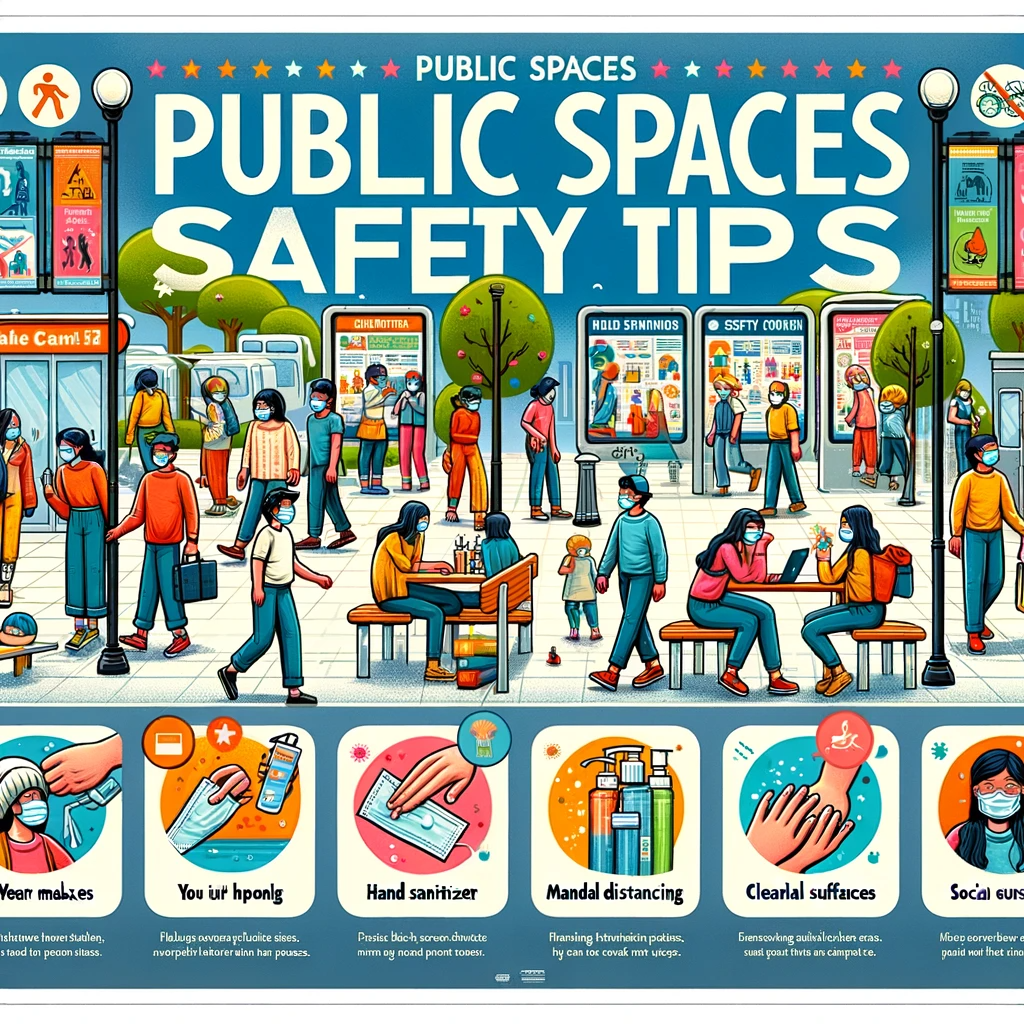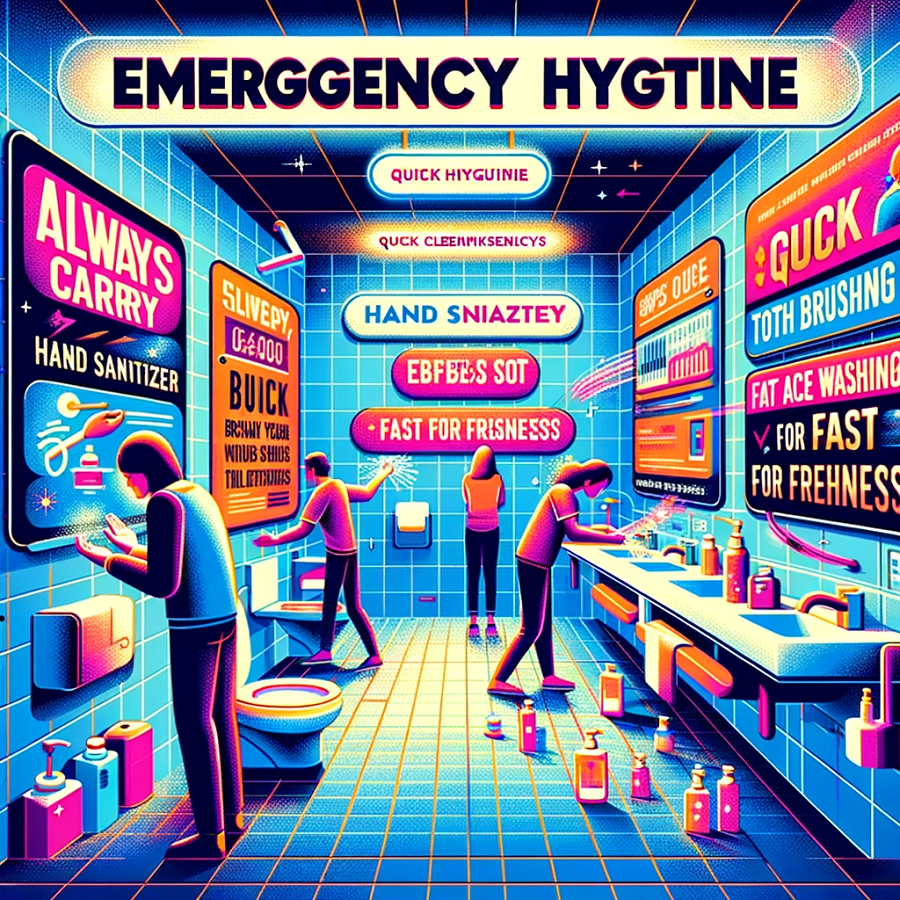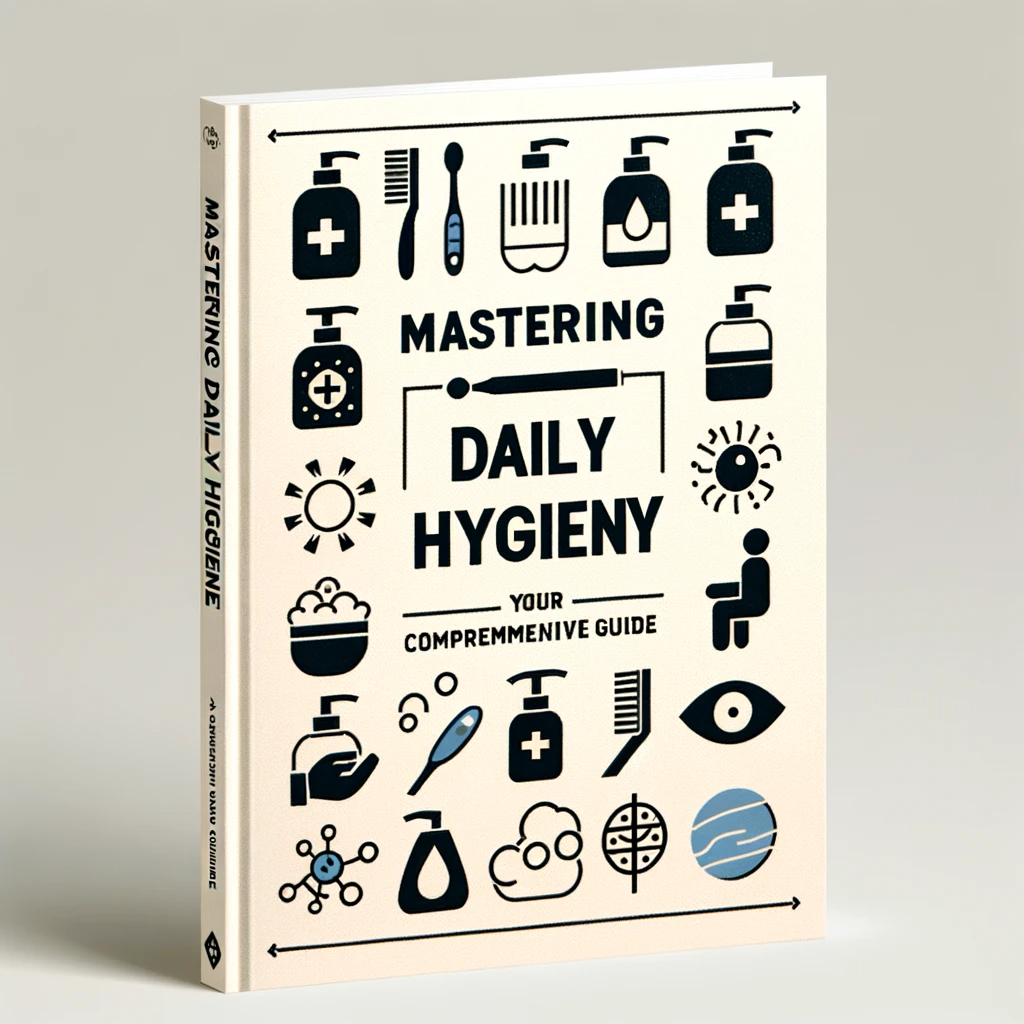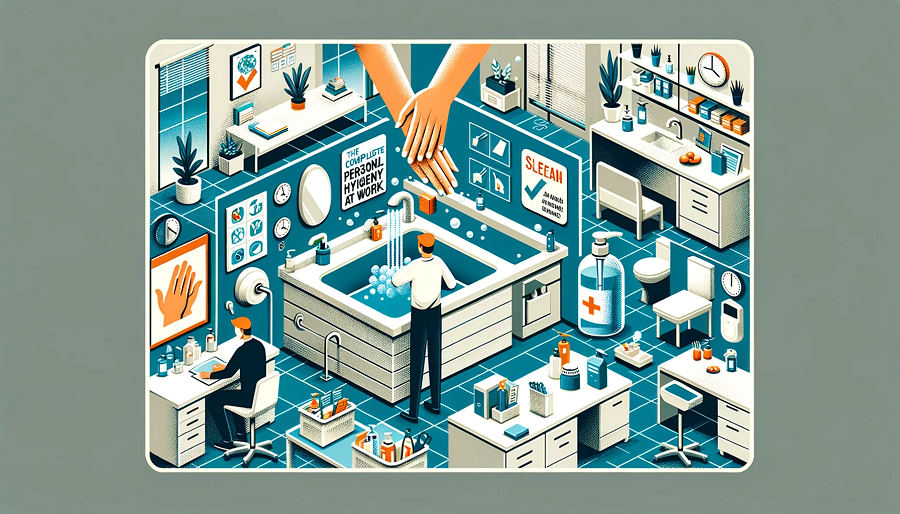In a world where health hazards lurk in unseen forms and the threat of infectious diseases is ever-present, mastering the art of hand hygiene emerges as a silent yet mighty guardian of our well-being. Often overlooked in its simplicity, hand hygiene is a fundamental practice with far-reaching implications for individual health and public safety. This comprehensive guide delves into the nuances of hand hygiene, unraveling its science, debunking myths, and highlighting its pivotal role in preventing disease spread. From step-by-step techniques to innovative advances, we explore how this seemingly mundane act transforms into a superpower in our daily lives. Join us in uncovering the layers of hand hygiene – an everyday habit that holds the key to a healthier world.
| Tip | Description | Use Case |
|---|---|---|
| Choose Soap Wisely | Opt for mild, non-irritating soaps for everyday use. Antibacterial soaps can be used in healthcare settings or during outbreaks. | Everyday use and specific situations like healthcare facilities. |
| Correct Handwashing Technique | Wet hands, apply soap, lather all areas, scrub for 20 seconds, rinse, and dry with a clean towel. | Essential for effective hand cleaning every time you wash. |
| Use Hand Sanitizer Properly | Apply enough sanitizer to cover all hand surfaces. Rub hands together until dry. | When soap and water are not available, especially in public places. |
| Regular Hand Hygiene | Wash hands frequently, especially before eating, after using the bathroom, and after coughing/sneezing. | Daily routine to minimize the spread of germs. |
| Care for Dry Hands | Use hand moisturizers to prevent dryness from frequent washing, especially in cold weather. | For those with sensitive skin or in dry climates. |
| Educate Children | Teach children proper handwashing techniques and the importance of hand hygiene from an early age. | In homes and schools to instill good hygiene habits in children. |
| Mind Nail Hygiene | Keep nails short and clean. Dirt and germs can accumulate under long nails. | Personal care to ensure thorough cleanliness. |
| Avoid Touching Face | Minimize touching your face with unwashed hands to reduce the risk of transferring germs. | Personal habit to prevent infection, especially during cold and flu season. |
| Hand Hygiene at Work | Encourage hand hygiene in the workplace. Use posters or reminders in restrooms and kitchens. | In offices and public spaces to promote a healthy environment. |
| Be Prepared While Traveling | Carry a small bottle of hand sanitizer and wipes for situations where you might not have access to soap and water. | For travelers and people on the go, to maintain hand hygiene. |
1. Hand Hygiene: Your First Defense Against Infection
Hand hygiene is often hailed as a simple yet powerful tool in the fight against infections. It’s a cornerstone of maintaining personal health and safeguarding those around us. Essentially, keeping our hands clean is not just a personal responsibility; it’s a social one too. Germs and microbes, invisible to the naked eye, lurk on surfaces and objects we touch daily. By practicing regular hand hygiene, we can significantly reduce the risk of transferring these germs to our bodies or to others.
Moreover, hand hygiene isn’t just about preventing common colds or the flu. It plays a crucial role in thwarting the spread of more serious infections, especially in healthcare settings. A routine as simple as washing hands can dramatically lower the incidence of healthcare-associated infections, which are a major challenge in hospitals worldwide.
2. The Science Behind Effective Hand Washing
Understanding the science behind hand washing is crucial for mastering hand hygiene. It’s not just about running your hands under water; it’s about how soap interacts with germs and dirt on your skin. Soap molecules have a hydrophilic (water-attracting) and a hydrophobic (water-repelling) end. When you wash your hands with soap and water, the hydrophobic ends of the soap molecules attach to the grease, oils, and microbes on your skin. When you rinse your hands, the hydrophilic ends ensure these microbes are washed away with the water.
To effectively remove germs, the Centers for Disease Control and Prevention (CDC) recommends scrubbing your hands for at least 20 seconds. This duration is crucial because it ensures that soap molecules have enough time to bind to the microbes and dirt, effectively removing them from your skin.
3. Step-by-Step Guide to Proper Handwashing Techniques
Proper handwashing involves several steps to ensure that all parts of the hands are thoroughly cleaned. Here’s a step-by-step guide:
- Wet your hands with clean, running water (warm or cold), turn off the tap, and apply soap.
- Lather your hands by rubbing them together with the soap. Be sure to lather the backs of your hands, between your fingers, and under your nails.
- Scrub your hands for at least 20 seconds. Need a timer? Hum the “Happy Birthday” song from beginning to end twice.
- Rinse your hands well under clean, running water.
- Dry your hands using a clean towel or air dry them.
Remember, the effectiveness of handwashing depends not just on the duration but also on covering all surfaces of the hands and fingers.
4. Choosing the Right Hand Hygiene Products
When it comes to hand hygiene products, there’s a variety to choose from, and each has its place. The most common are hand soaps and sanitizers. When selecting a soap, look for one that is gentle on the skin but effective against germs. For everyday use, regular soap is sufficient. However, in healthcare settings or during a disease outbreak, antibacterial soaps may be preferred.
Hand sanitizers, on the other hand, are a convenient alternative when soap and water aren’t readily available. Choose a hand sanitizer with at least 60% alcohol content, as recommended by health authorities. Alcohol-based hand sanitizers are effective in killing most germs, but they don’t eliminate all types of microbes, and they’re not as effective when hands are visibly dirty or greasy.
5. The Role of Hand Hygiene in Preventing Disease Spread
Hand hygiene plays a pivotal role in preventing the spread of diseases. This simple practice is a key factor in controlling the transmission of infectious diseases, from common colds to more serious illnesses like norovirus and healthcare-associated infections. By regularly washing or sanitizing hands, individuals can significantly reduce their chances of acquiring or spreading infections.
In the context of public health, hand hygiene becomes even more important. During outbreaks of contagious diseases, such as the flu or COVID-19, diligent hand hygiene can be a critical component in slowing the spread of the disease. It’s not just an individual act of cleanliness but a public health measure that benefits entire communities.
6. Hand Hygiene Myths Debunked
There are several myths surrounding hand hygiene that need to be addressed. For instance, some people believe that using antibacterial soap is always better than regular soap. However, studies have shown that for non-healthcare settings, regular soap is just as effective in removing germs. Another common myth is that hot water is more effective than cold water for hand washing. The temperature of the water does not affect the ability of soap to kill germs; what matters most is the technique used and the duration of washing.
Moreover, some assume that hand sanitizers can replace hand washing. While hand sanitizers are a good alternative when soap and water are not available, they are not as effective in certain situations, such as when hands are visibly dirty or greasy. Debunking these myths is crucial in promoting correct hand hygiene practices.
7. The Impact of Hand Hygiene on Public Health
The impact of hand hygiene on public health is immense. Proper hand hygiene not only reduces the spread of gastrointestinal and respiratory infections but also plays a significant role in reducing the burden of healthcare-associated infections. Improved hand hygiene practices in hospitals and other healthcare settings have been shown to result in lower rates of these infections, which are a major cause of morbidity and mortality worldwide.
Furthermore, hand hygiene is a cost-effective public health measure. The cost of implementing improved hand hygiene practices is much lower than the cost associated with healthcare-associated infections, including prolonged hospital stays, additional treatments, and the emotional toll on patients and their families.
8. Innovations and Advances in Hand Hygiene Practices
The field of hand hygiene is continually evolving with new innovations and advances. For example, the development of new hand sanitizer formulations that are more effective and less irritating to the skin has made hand hygiene more accessible and comfortable. Additionally, the use of technology, such as electronic monitoring systems in healthcare settings, has provided more accurate and real-time feedback on hand hygiene compliance.
Another area of innovation is in education and awareness campaigns. Interactive tools and engaging educational programs have been developed to teach both children and adults the importance of hand hygiene and the correct techniques to use.
Final Thoughts:
hand hygiene stands as a testament to how everyday actions can have monumental impacts on our health and the well-being of communities worldwide. This guide has navigated through the essential facets of hand hygiene, from the fundamental science of soap and water to the latest innovations making compliance easier and more effective. We’ve debunked myths, provided practical how-to’s, and emphasized the substantial public health benefits of keeping our hands clean.
As we move forward, let us carry the insights and practices from this guide into our daily lives. Embrace hand hygiene not just as a habit but as a conscious act of prevention and care—for yourself and for others. By doing so, we can all contribute to a healthier world, one handwash at a time. Remember, in the grand scheme of health and hygiene, our hands wield incredible power. Let’s use it wisely and make hand hygiene a priority in our journey towards wellness and safety.
FAQs
1. Why is hand hygiene so important?
Hand hygiene is crucial because it’s one of the most effective ways to prevent the spread of germs and infections. Regular handwashing can significantly reduce the likelihood of contracting illnesses like colds, flu, and gastrointestinal infections.
2. How long should I wash my hands?
The Centers for Disease Control and Prevention (CDC) recommends washing your hands for at least 20 seconds. This duration is essential to ensure that soap and water have enough time to effectively remove germs.
3. Can hand sanitizers replace handwashing?
Hand sanitizers are a good alternative when soap and water are not available. However, they are not as effective in certain conditions, such as when hands are visibly dirty. It’s best to use hand sanitizers with at least 60% alcohol content.
4. Is antibacterial soap better than regular soap?
For most people in everyday situations, regular soap is as effective as antibacterial soap in removing germs. The key to effective handwashing is the technique used, not necessarily the type of soap.
5. What is the proper handwashing technique?
The proper technique involves wetting your hands, applying soap, lathering all surfaces (including the backs of hands, between fingers, and under nails), scrubbing for at least 20 seconds, rinsing thoroughly, and drying with a clean towel or air drying.
6. How does hand hygiene impact public health?
Improved hand hygiene practices can significantly reduce the spread of infectious diseases, which is crucial for public health. This is especially important in preventing the spread of diseases during outbreaks and in healthcare settings.
7. Are there innovations in hand hygiene practices?
Yes, there are ongoing innovations, such as more effective and skin-friendly hand sanitizer formulations, electronic compliance monitoring in healthcare settings, and engaging educational programs for hand hygiene awareness.
8. How can I measure the effectiveness of my hand hygiene routine?
Effectiveness can be gauged by the reduction in the incidence of illnesses like colds and gastrointestinal infections. In healthcare settings, compliance rates and reduced infection rates are key indicators.
9. What are common myths about hand hygiene?
Common myths include the belief that hot water is more effective than cold water for washing hands and that hand sanitizers can always replace handwashing. Another myth is that antibacterial soap is always necessary for effective hand cleaning.
10. What should I look for in hand hygiene products?
When choosing soaps, opt for ones that are gentle on the skin. For hand sanitizers, select products with at least 60% alcohol content. The right product depends on your specific needs and the setting in which they are used.







